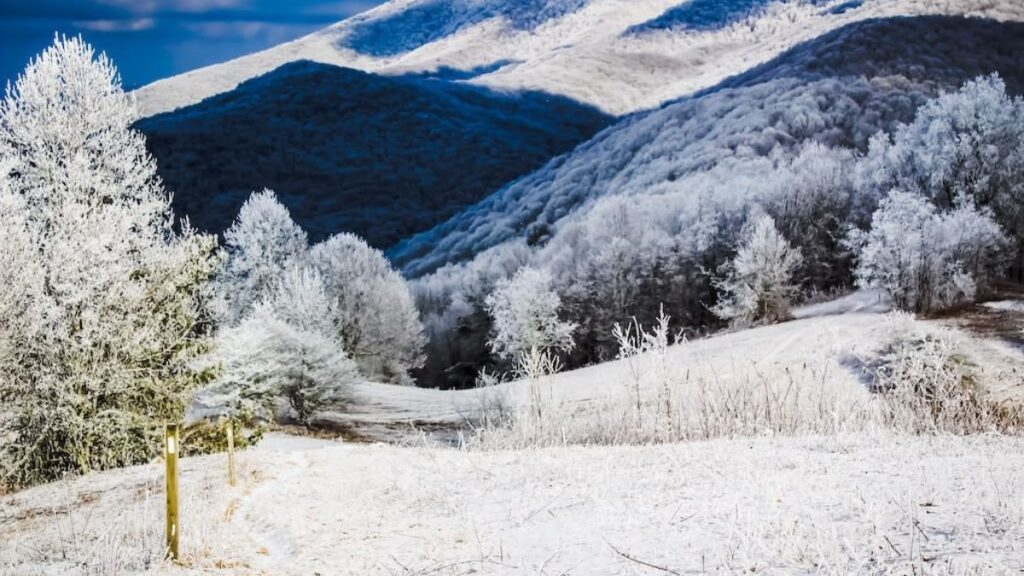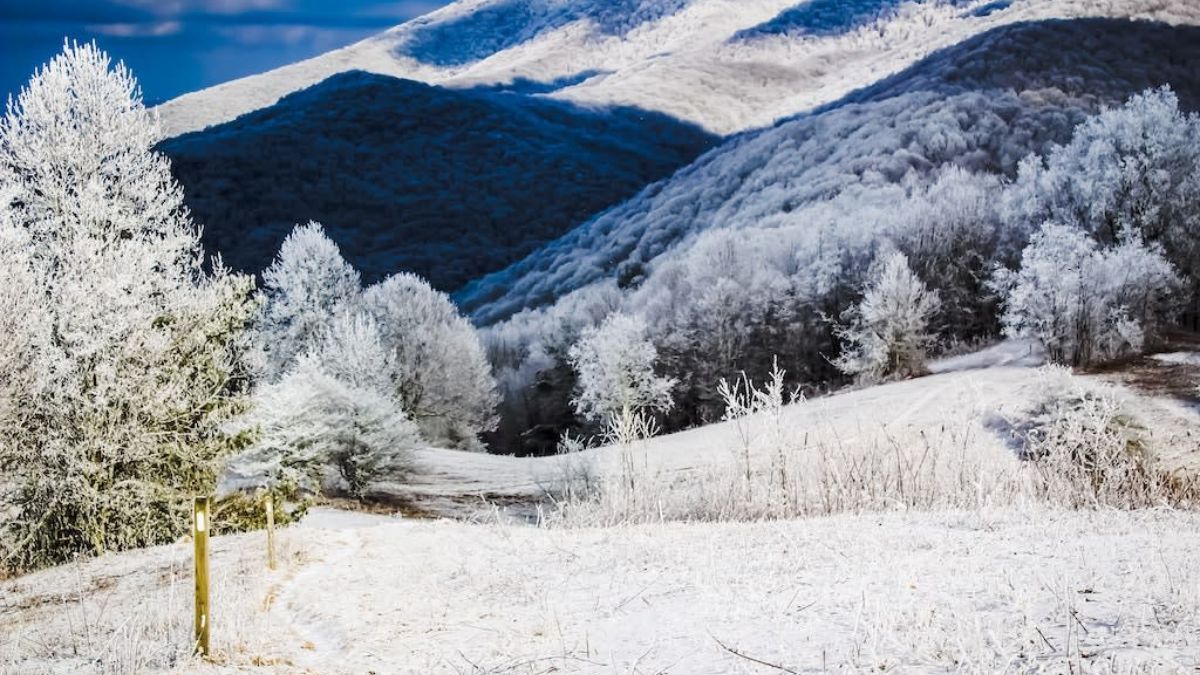Yes, it does snow in Asheville, North Carolina. While Asheville may not receive as much snowfall as some other parts of the country, it does experience occasional snow during the winter months. The average annual snowfall in Asheville is around 10 inches, but this can vary significantly from year to year.
Snowstorms in Asheville are usually short-lived, and the snow melts relatively quickly. The heaviest snowfalls are more likely to occur in the higher elevations surrounding the city, such as in the nearby mountains.
Asheville, North Carolina, nestled in the heart of the scenic Blue Ridge Mountains, is a popular destination. It is known for its vibrant arts scene, stunning natural beauty, and rich cultural heritage.

One question that often arises for visitors and residents alike is whether or not Asheville receives snowfall during winter. In this article, we will explore the climate of Asheville and answer the question: Does it snow in Asheville, NC?
Location Overview
Asheville, North Carolina, is a picturesque city located in the western part of the state. Situated in the Blue Ridge Mountains, it offers a stunning natural landscape with rolling hills, lush forests, and breathtaking views. Here’s an overview of Asheville’s location and surrounding areas:
- Geographical Location
Asheville is located in Buncombe County in the western part of North Carolina. It is nestled between the Great Smoky Mountains to the west and the Blue Ridge Mountains to the east.
- Elevation
Asheville sits at an elevation of approximately 2,200 feet above sea level. The city’s higher elevation contributes to its cooler temperatures and distinct weather patterns.
- Proximity to Major Cities
Asheville is about 125 miles west of Charlotte, the largest city in North Carolina. It is roughly 250 miles northwest of Raleigh, the state capital. Additionally, it is about 130 miles northeast of Atlanta, Georgia.
- Nearby National Forests and Parks
The city is surrounded by several natural gems, including the Pisgah National Forest and the Nantahala National Forest. These vast forested areas offer outdoor enthusiasts opportunities for hiking, camping, fishing, and scenic drives.
The Great Smoky Mountains National Park is also within driving distance from Asheville, providing further outdoor recreational options.
- Blue Ridge Parkway
The iconic Blue Ridge Parkway, a scenic highway that stretches over 450 miles through the Appalachian Mountains, passes through Asheville. This renowned roadway offers breathtaking views and an opportunity to experience the beauty of the region.
- Distance to the Coast
Asheville is located inland and is not within close proximity to the coast. The nearest coastal city is Wilmington, which is approximately 300 miles southeast of Asheville.
- Asheville Regional Airport
The city is served by the Asheville Regional Airport, located about 15 miles south of downtown Asheville. The airport provides domestic flights to various destinations, making it easily accessible for travelers.
Climate of Asheville
Asheville experiences a humid subtropical climate characterized by mild to hot summers and cool to cold winters. The city is located at approximately 2,200 feet, contributing to its unique weather patterns.
Summers in Asheville are usually with temperatures in the 70s to 80s Fahrenheit. Winters are cold, with average highs in the 40s to 50s Fahrenheit and occasional snowfall.
Autumns bring cooler temperatures and vibrant fall foliage. While springs are mild and gradually warming. The city’s higher elevation contributes to slightly cooler temperatures compared to other parts of the state.
Historical Snowfall Record
Asheville, North Carolina, has a historical record of snowfall dating back many years. The highest recorded snowfall in Asheville occurred on March 13, 1993, when a total of 24.0 inches of snow blanketed the city. This remains the largest single snowfall event in Asheville’s history.
It is important to note that these records are based on historical data, and future snowfall patterns may differ. Weather patterns can be unpredictable, and snowfall amounts vary each winter.
Winter Season & Snowfall Pattern
Winter in Asheville typically begins in December and lasts through February, with January being the coldest month. During this time, the city experiences cooler temperatures and possibly precipitation in various forms.
While Asheville may not receive as much snowfall as some other parts of the country, it does experience occasional snow in winter. The average annual snowfall in Asheville is around 10 inches, but this can vary significantly from year to year.
Snowfall in Asheville tends to be intermittent and is often influenced by weather systems moving through the region. Snowstorms in Asheville are usually short-lived, and the snow melts relatively quickly.
Locations to Enjoy Snow
Asheville, North Carolina, and its surrounding areas offer several locations where you can enjoy the beauty of snow and engage in winter activities. Here are some popular spots to experience the snow in and around Asheville:
- Mount Mitchell State Park
Located 35 miles northeast of Asheville, Mount Mitchell is the highest peak east of the Mississippi River. It offers a winter wonderland with ample opportunities for snowshoeing, cross-country skiing, and scenic hikes through snow-covered trails.
- Cataloochee Ski Area
Situated in Maggie Valley, approximately 40 miles west of Asheville, Cataloochee Ski Area is a popular destination for skiing and snowboarding. The ski resort features several slopes of varying difficulty levels, making it suitable for beginners and experienced winter sports enthusiasts.
- Great Smoky Mountains National Park
While not directly in Asheville, the Great Smoky Mountains National Park is within driving distance and offers incredible winter landscapes. The higher elevations of the park receive more snow, creating opportunities for winter activities and enjoying the serene beauty of snow-capped mountains.
- Pisgah National Forest
The Pisgah National Forest, which surrounds Asheville, transforms into a winter playground when it snows. The forest offers numerous trails, including the popular Black Balsam Knob and Graveyard Fields, where you can explore snow-covered landscapes.
- Biltmore Estate
The Biltmore Estate, a historic mansion, and sprawling estate in Asheville, takes on a magical charm when adorned in a snowy coat. The estate grounds offer picturesque scenery for walks during winter.
- Asheville Parks
Asheville’s parks, including Pack Square Park and Carrier Park, can be delightful spots to enjoy the snow. Pack Square Park, located in downtown Asheville, features a beautiful open space surrounded by shops and restaurants, while Carrier Park offers open fields where you can have fun in the snow.
Whether it is skiing, snowshoeing, or simply reveling in the serene winter landscapes, these locations near Asheville provide opportunities to embrace the snowy season.
Factors Influencing Snowfall
Several factors influence snowfall in Asheville, North Carolina:
- Elevation
Asheville’s higher elevation compared to surrounding areas contributes to increased snowfall.
- Topography
Mountainous terrain, such as the Blue Ridge Mountains, affects snowfall patterns through orographic lift and exposure to moisture-laden air.
- Storm Tracks
The path of weather systems determines the amount of snowfall, with direct hits resulting in heavier snowfall.
- Temperature
Colder temperatures in winter create favorable conditions for snowfall, but marginal temperatures can lead to rain or a mix of precipitation.
- Moisture Availability
Like the Gulf of Mexico, proximity to moisture sources influences snowfall potential.
- Climate Change
Long-term climate change impacts can alter snowfall patterns, but the specific effects on Asheville’s snowfall are complex.
Snowfall amounts can vary significantly each year due to the interplay of these factors, making it essential to monitor local weather forecasts for the most accurate information.
Conclusion
While Asheville may not experience heavy snowfall like some other parts of the country, it does receive occasional snow during the winter months. With an average annual snowfall of around 10 inches, the city offers residents and visitors a taste of winter magic.
So, if you are planning a trip to Asheville in winter, be prepared for the possibility of snow and embrace the beauty it brings to this vibrant city in the mountains.
